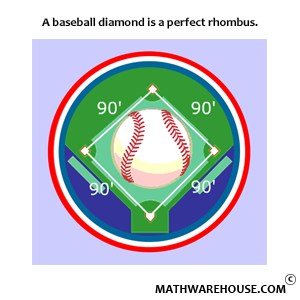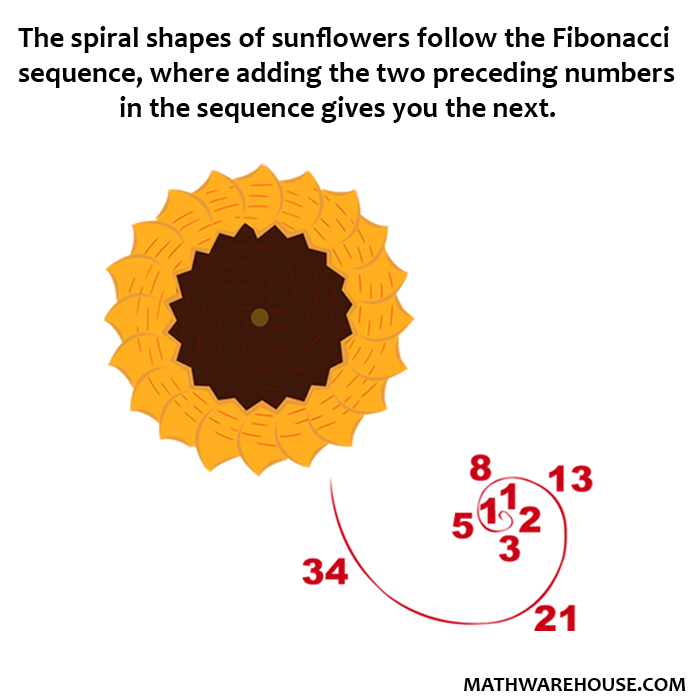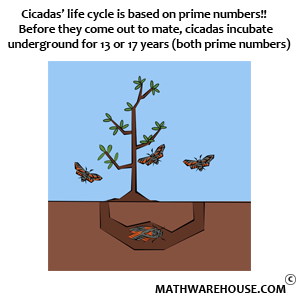Differentiate using the quotient rule. The parts in $$\blue{blue}$$ are associated with the numerator.
\begin{align*} f'(x) & = \frac{(6x+5)\cdot \blue 9 - \blue{(9x+4)}\cdot 6}{(6x+5)^2} \end{align*}
Simplify the numerator.
\begin{align*} f'(x) & = \frac{(6x+5)\cdot \blue 9 - \blue{(9x+4)}\cdot 6}{(6x+5)^2}\\[6pt] & = \frac{54x + 45 - (54x + 24)}{(6x+5)^2}\\[6pt] & = \frac{54x + 45 - 54x - 24}{(6x+5)^2}\\[6pt] & = \frac{21}{(6x+5)^2} \end{align*}
$$\displaystyle f'(x) = \frac{21}{(6x+5)^2}$$
Differentiate using the quotient rule. The parts in $$\blue{blue}$$ are associated with the numerator.
$$ \begin{align*} f'(x) & = \frac{(3x+4)\cdot \blue{(-11)} - \blue{(2-11x)}\cdot 3}{(3x+4)^2} \end{align*} $$
Simplify the numerator.
$$ \begin{align*} f'(x) & = \frac{(3x+4)\cdot \blue{(-11)} - \blue{(2-11x)}\cdot 3}{(3x+4)^2}\\[6pt] & = \frac{-33x-44 - (6-33x)}{(3x+4)^2}\\[6pt] & = \frac{-33x-44 - 6+33x}{(3x+4)^2}\\[6pt] & = \frac{-50}{(3x+4)^2} \end{align*} $$
Evaluate $$f'(x)$$ at $$x = 0$$.
$$ f'(0) = \frac{-50}{(3(0)+4)^2} = \frac{-50}{4^2} = -\frac{50}{16} = -\frac{25} 8 $$
$$\displaystyle f'(0) = -\frac{25} 8$$
Differentiate using the quotient rule. The parts in $$\blue{blue}$$ are associated with the numerator.
$$ \begin{align*} f'(x) & = \frac{(2x+3)\cdot\blue{2x} - \blue{(x^2+1)}\cdot 2}{(2x+3)^2} \end{align*} $$
Simplify the numerator.
$$ \begin{align*} f'(x) & = \frac{(2x+3)\cdot 2x - (x^2+1)\cdot 2}{(2x+3)^2}\\[6pt] & = \frac{4x^2 + 6x - (2x^2+2)}{(2x+3)^2}\\[6pt] & = \frac{4x^2 + 6x - 2x^2 - 2}{(2x+3)^2}\\[6pt] & = \frac{2x^2 + 6x - 2}{(2x+3)^2}\\[6pt] & = \frac{2(x^2 + 3x - 1)}{(2x+3)^2} \end{align*} $$
Evaluate $$f'(x)$$ at $$x = 1$$.
$$ f'(1) = \frac{2\left((1)^2 + 3(1) - 1\right)}{\left(2(1)+3\right)^2} = \frac{2\left(1 + 3 - 1\right)}{\left(2+3\right)^2} = \frac{6}{25} $$
$$ \displaystyle f'(1) = \frac 6 {25} $$
Differentiate using the quotient rule. The parts in $$\blue{blue}$$ are associated with the numerator.
$$ \begin{align*} f'(x) & = \frac{(x-8)\cdot\blue{(2x+4)} - \blue{(x^2 + 4x + 1)}\cdot 1}{(x-8)^2} \end{align*} $$
Simplify the numerator.
$$ \begin{align*} f'(x) & = \frac{\red{(x-8) (2x+4)} - (x^2 + 4x + 1)}{(x-8)^2}\\[6pt] & = \frac{\red{2x^2+4x-16x-32} - x^2 - 4x - 1}{(x-8)^2}\\[6pt] & = \frac{x^2 - 16x - 33}{(x-8)^2} \end{align*} $$
$$\displaystyle f'(x) = \frac{x^2 - 16x - 33}{(x-8)^2}$$
Differentiate using the quotient rule. The parts in $$\blue{blue}$$ are associated with the numerator.
$$ \begin{align*} f'(x) & = \frac{(4x^2 - 9)\cdot \blue 3 - \blue{(3x-2)}\cdot (8x)}{(4x^2 - 9)^2} \end{align*} $$
Simplify the numerator.
$$ \begin{align*} f'(x) & = \frac{(4x^2 - 9)\cdot 3 - (3x-2)\cdot (8x)}{(4x^2 - 9)^2}\\[6pt] & = \frac{12x^2 - 27 - (24x^2-16x)}{(4x^2 - 9)^2}\\[6pt] & = \frac{12x^2 - 27 - 24x^2 + 16x}{(4x^2 - 9)^2}\\[6pt] & = \frac{-12x^2 + 16x - 27}{(4x^2 - 9)^2}\\[6pt] & = -\frac{12x^2 - 16x + 27}{(4x^2 - 9)^2} \end{align*} $$
$$\displaystyle f'(x) = -\frac{12x^2 - 16x + 27}{(4x^2 - 9)^2}$$
Differentiate using the quotient rule. The parts in $$\blue{blue}$$ are associated with the numerator.
$$ \begin{align*} f'(x) & = \frac{(3x^2-x)\cdot\blue 5 - \blue{(5x+2)}\cdot (6x-1)}{(3x^2-x)^2} \end{align*} $$
Simplify the numerator.
$$ \begin{align*} f'(x) & = \frac{(3x^2-x)\cdot 5 - \red{(5x+2)(6x-1)}}{(3x^2-x)^2}\\[6pt] & = \frac{15x^2 - 5x - \red{(30x^2-5x+12x-2)}}{(3x^2-x)^2}\\[6pt] & = \frac{15x^2 - 5x - 30x^2+5x-12x+2}{(3x^2-x)^2}\\[6pt] & = \frac{-15x^2 - 12x + 2}{(3x^2-x)^2}\\[6pt] & = -\frac{15x^2 + 12x - 2}{(3x^2-x)^2} \end{align*} $$
Evaluate $$f'(x)$$ at $$x = 2$$
$$ f'(2) = -\frac{15(2)^2 + 12(2) - 2}{[3(2)^2- 2]^2} = -\frac{15(4) + 24 - 2}{[3(4)- 2]^2} = -\frac{60 + 22}{10^2} = -\frac{82}{100} = -\frac{41}{50} $$
$$ \displaystyle f'(2) = -\frac{41}{50} $$
Differentiate using the quotient rule. The parts in $$\blue{blue}$$ are associated with the numerator.
$$ \begin{align*} f'(x) & = \frac{(x^2 - 1)\cdot\blue{2x} - \blue{(x^2+1)}\cdot 2x}{(x^2 - 1)^2} \end{align*} $$
Simplify the numerator.
$$ \begin{align*} f'(x) & = \frac{(x^2 - 1)\cdot 2x - (x^2+1)\cdot 2x}{(x^2 - 1)^2}\\[6pt] & = \frac{2x^3 - 2x - (2x^3+2x)}{(x^2 - 1)^2}\\[6pt] & = \frac{2x^3 - 2x - 2x^3 - 2x}{(x^2 - 1)^2}\\[6pt] & = \frac{- 2x - 2x}{(x^2 - 1)^2}\\[6pt] & = \frac{- 4x}{(x^2 - 1)^2}\\[6pt] & = -\frac{4x}{(x^2 - 1)^2} \end{align*} $$
Evaluate $$f'(3)$$
$$ f'(3) = -\frac{4(3)}{(3^2 - 1)^2} = -\frac{12}{8^2} = - \frac{12}{64} = - \frac 3 {16} $$
$$\displaystyle f'(3) = -\frac 3 {16}$$
Differentiate using the quotient rule. The parts in $$\blue{blue}$$ are associated with the numerator.
$$ \begin{align*} f'(x) & = \frac{(x^2-3x+2)\cdot\blue{(4x+4)} - \blue{(2x^2 + 4x + 3)}\cdot (2x - 3)}{(x^2-3x+2)^2} \end{align*} $$
Simplify the numerator.
$$ \begin{align*} f'(x) & = \frac{\blue{(x^2-3x+2)(4x+4)} - \red{(2x^2 + 4x + 3)(2x - 3)}}{(x^2-3x+2)^2}\\[6pt] & = \frac{\blue{4x^3 - 12x^2 + 8x + 4x^2 - 12x + 8} - \red{(2x^2 + 4x + 3)(2x - 3)}}{(x^2-3x+2)^2}\\[6pt] & = \frac{\blue{4x^3 - 8x^2 - 4x + 8} - \red{(2x^2 + 4x + 3)(2x - 3)}}{(x^2-3x+2)^2}\\[6pt] & = \frac{\blue{4x^3 - 8x^2 - 4x + 8} - \red{(4x^3+8x^2+6x - 6x^2-12x-9)}}{(x^2-3x+2)^2}\\[6pt] & = \frac{\blue{4x^3 - 8x^2 - 4x + 8} - \red{(4x^3+2x^2-6x-9)}}{(x^2-3x+2)^2}\\[6pt] & = \frac{4x^3 - 8x^2 - 4x + 8 - 4x^3-2x^2+6x+9}{(x^2-3x+2)^2}\\[6pt] & = \frac{- 10x^2 +2x + 17}{(x^2-3x+2)^2}\\[6pt] & = -\frac{10x^2 - 2x - 17}{(x^2-3x+2)^2} \end{align*} $$
$$\displaystyle f'(x) = -\frac{10x^2 - 2x - 17}{(x^2-3x+2)^2}$$
Differentiate using the quotient rule. The parts in $$\blue{blue}$$ are associated with the numerator.
$$ \begin{align*} f'(x) & = \frac{(4x-1)\cdot \blue{\frac 2 3 x^{-1/3}} - \blue{x^{2/3}}\cdot 4}{(4x-1)^2} \end{align*} $$
Simplify the derivative.
$$ \begin{align*} f'(x) & = \frac{(4x-1)\cdot \frac 2 3 x^{-1/3} - x^{2/3}\cdot 4}{(4x-1)^2}\\[6pt] & = \frac{\left(\frac 2 3x^{-1/3}\cdot(4x-1) - 4x^{2/3}\right)}{(4x-1)^2}\cdot \blue{\frac 3 3}\\[6pt] & = \frac{\left(2x^{-1/3}\cdot(4x-1) - 12x^{2/3}\right)}{3(4x-1)^2}\cdot \red{\frac{x^{1/3}}{x^{1/3}}}\\[6pt] & = \frac{2(1)\cdot(4x-1) - 12x}{3x^{1/3}(4x-1)^2}\\[6pt] & = \frac{8x-2 - 12x}{3x^{1/3}(4x-1)^2}\\[6pt] & = \frac{-4x-2}{3x^{1/3}(4x-1)^2}\\[6pt] & = -\frac{2(2x+1)}{3x^{1/3}(4x-1)^2} \end{align*} $$
(Optional) Rationalize the denominator.
$$ f'(x) = -\frac{2(2x+1)}{3x^{1/3}(4x-1)^2} = -\frac{2\sqrt[3]{x^2}\,(2x+1)}{3x(4x-1)^2} $$
$$ \displaystyle f'(x) = -\frac{2\sqrt[3]{x^2}\,(2x+1)}{3x(4x-1)^2} $$
Rewrite the numerator as a power function.
$$ f(x) = \frac{3x^{1/2}}{5 - 2x} $$
Differentiate using the quotient rule. The parts in $$\blue{blue}$$ are associated with the numerator.
$$ \begin{align*} f'(x) & = \frac{(5-2x)\cdot\blue{3\left(\frac 1 2\right)x^{-1/2}} - \blue{3x^{1/2}}\cdot (-2)}{(5-2x)^2} \end{align*} $$
Simplify the derivative.
$$ \begin{align*} f'(x) & = \frac{(5-2x)\cdot \frac 3 2\,x^{-1/2} - 3x^{1/2}\cdot (-2)}{(5-2x)^2}\\[6pt] & = \frac{\frac 3 2\,x^{-1/2}\,(5-2x) + 6x^{1/2}}{(5-2x)^2}\cdot \blue{\frac 2 2}\\[6pt] & = \frac{3x^{-1/2}\,(5-2x) + 12x^{1/2}}{2(5-2x)^2}\cdot \red{\frac{x^{1/2}}{x^{1/2}}}\\[6pt] & = \frac{3(5-2x) + 12x}{2x^{1/2}\,(5-2x)^2}\\[6pt] & = \frac{15-6x + 12x}{2x^{1/2}\,(5-2x)^2}\\[6pt] & = \frac{6x + 15}{2x^{1/2}\,(5-2x)^2}\\[6pt] & = \frac{3(2x + 5)}{2x^{1/2}\,(5-2x)^2} \end{align*} $$
(Optional) Rationalize the denominator.
$$ f'(x) = \frac{3(2x + 5)}{2x^{1/2}\,(5-2x)^2} = \frac{3\sqrt x\,(2x + 5)}{2x\,(5-2x)^2} $$
Evaluate $$f'(4)$$.
$$ \begin{align*} f'(4) & = \frac{3\sqrt 4\,(2(4) + 5)}{2(4)\,[5-2(4)]^2}\\[6pt] & = \frac{3(2)(13)}{2(4)(-3)^2}\\[6pt] & = \frac{13}{(4)(3)}\\[6pt] & = \frac{13}{12} \end{align*} $$
$$ \displaystyle f'(4) = \frac{13}{12} $$
Differentiate using the quotient rule. The parts in $$\blue{blue}$$ are associated with the numerator.
$$ \begin{align*} f'(x) & = \frac{(2x + 1)\cdot \blue{2e^{2x}} - \blue{e^{2x}}\cdot 2}{(2x + 1)^2} \end{align*} $$
Simplify the numerator.
$$ \begin{align*} f'(x) & = \frac{(2x + 1)\cdot 2e^{2x} - 2e^{2x}}{(2x + 1)^2}\\[6pt] & = \frac{\red{2e^{2x}}(2x + 1) - \red{2e^{2x}}}{(2x + 1)^2}\\[6pt] & = \frac{\red{2e^{2x}}\left[(2x + 1) - 1\right]}{(2x + 1)^2}\\[6pt] & = \frac{2e^{2x}(2x)}{(2x + 1)^2}\\[6pt] & = \frac{4xe^{2x}}{(2x + 1)^2} \end{align*} $$
Evaluate $$f'(0)$$
$$ f'(0) = \frac{4(0)e^{2(0)}}{(2(0) + 1)^2} = 0 $$
$$\displaystyle f'(0) = 0$$
Differentiate using the quotient rule. The parts in $$\blue{blue}$$ are associated with the numerator.
$$ \begin{align*} f'(x) & = \frac{(e^{-3x} + 1)\cdot \blue 6 - \blue{(6x - 1)}\cdot (-3e^{-3x})}{(e^{-3x} + 1)^2} \end{align*} $$
Simplify the numerator.
$$ \begin{align*} f'(x) & = \frac{(e^{-3x} + 1)\cdot 6 - (6x - 1)\cdot (-3e^{-3x})}{(e^{-3x} + 1)^2}\\[6pt] & = \frac{6e^{-3x} + 6 - (-18xe^{-3x} + 3e^{-3x})}{(e^{-3x} + 1)^2}\\[6pt] & = \frac{6e^{-3x} + 6 + 18xe^{-3x} - 3e^{-3x}}{(e^{-3x} + 1)^2}\\[6pt] & = \frac{18xe^{-3x} + 3e^{-3x} + 6}{(e^{-3x} + 1)^2}\\[6pt] & = \frac{3\left(6xe^{-3x} + e^{-3x} + 2\right)}{(e^{-3x} + 1)^2} \end{align*} $$
$$ \displaystyle f'(x) = \frac{3\left(6xe^{-3x} + e^{-3x} + 2\right)}{(e^{-3x} + 1)^2} $$
Differentiate using the quotient rule. The parts in $$\blue{blue}$$ are associated with the numerator.
$$ \begin{align*} f'(x) & = \frac{(1 - 3x)\cdot\blue{2\cos 2x} - \blue{\sin 2x}\cdot (-3)}{(1 - 3x)^2} \end{align*} $$
Simplify the numerator.
$$ \begin{align*} f'(x) & = \frac{(1 - 3x)\cdot 2\cos 2x - \sin 2x\cdot (-3)}{(1 - 3x)^2}\\[6pt] & = \frac{2(1 - 3x)\cos 2x +3\sin 2x}{(1 - 3x)^2} \end{align*} $$
$$ \displaystyle f'(x) = \frac{2(1 - 3x)\cos 2x +3\sin 2x}{(1 - 3x)^2} $$
Differentiate using the quotient rule. The parts in $$\blue{blue}$$ are associated with the numerator.
$$ \begin{align*} f'(x) & = \frac{\sin \pi x \cdot \blue 7 - \blue{(7x-6)}\cdot \pi \cos \pi x}{\sin^2 \pi x} \end{align*} $$
Simplify the numerator.
$$ \begin{align*} f'(x) & = \frac{\sin \pi x \cdot 7 - (7x-6)\cdot \pi \cos \pi x}{\sin^2 \pi x}\\[6pt] & = \frac{7\sin \pi x - \pi (7x-6)\cos \pi x}{\sin^2 \pi x} \end{align*} $$
Evaluate $$f'\left(\frac 1 2\right)$$
$$ \begin{align*} f'(2) & = \frac{7\blue{\sin \frac \pi 2} - \pi \left[7\left(\frac 1 2\right)-6\right]\red{\cos \frac \pi 2}}{\sin^2 \frac \pi 2}\\[6pt] & = \frac{7\blue{(1)} - 8\pi\red{(0)}}{\left(\sin \frac \pi 2\right)^2}\\[6pt] & = \frac{7}{1}\\[6pt] & = 7 \end{align*} $$
$$f'\left(\frac 1 2\right) = 7$$
Differentiate using the quotient rule. The parts in $$\blue{blue}$$ are associated with the numerator.
$$ \begin{align*} f'(x) & = \frac{\sin x\cdot \blue{2\cos 2x} - \blue{\sin 2x}\cos x}{\sin^2 x}\\[6pt] & = \frac{2\sin x\cos 2x - \sin 2x\cos x}{\sin^2 x} \end{align*} $$
$$\displaystyle f'(x) = \frac{2\sin x\cos 2x - \sin 2x\cos x}{\sin^2 x}$$
Differentiate with the quotient rule. The parts in $$\blue{blue}$$ are associated with the numerator.
$$ \begin{align*} f'(x) & = \frac{\cos 3x\cdot\blue{2\cos 2x} - \blue{\sin 2x}\cdot (-3\sin 3x)}{\cos^2 3x} \end{align*} $$
Simplify the numerator.
$$ \begin{align*} f'(x) & = \frac{\cos 3x\cdot 2\cos 2x - \sin 2x\cdot (-3\sin 3x)}{\cos^2 3x}\\[6pt] & = \frac{2\cos 3x\cos 2x + 3\sin 2x\sin 3x}{\cos^2 3x} \end{align*} $$
$$\displaystyle f'(x) = \frac{2\cos 3x\cos 2x + 3\sin 2x\sin 3x}{\cos^2 3x}$$
Differentiate using the quotient rule. The parts in $$\blue{blue}$$ are associated with the numerator.
Note: we established in Example 3 that $$\displaystyle \frac d {dx}\left(\tan kx\right) = k\sec^2 kx$$
$$ \begin{align*} f'(x) & = \frac{\tan3x\cdot\blue{8\sec^2 8x} - \blue{\tan 8x}\cdot 3\sec^2 3x }{\tan^2 3x}\\[6pt] & = \frac{8\tan3x\sec^2 8x - 3\tan 8x\sec^2 3x }{\tan^2 3x} \end{align*} $$
$$\displaystyle f'(x) = \frac{8\tan3x\sec^2 8x - 3\tan 8x\sec^2 3x }{\tan^2 3x}$$
Differentiate using the quotient rule. The parts in $$\blue{blue}$$ are associated with the numerator of $$f$$.
$$ \begin{align*} f'(x) & = \frac{\tan x \cdot \blue 4 - \blue{4x}\sec^2 x}{\tan^2 x}\\[6pt] & = \frac{4\tan x - 4x\sec^2 x}{\tan^2 x} \end{align*} $$
$$\displaystyle f'(x) = \frac{4\tan x - 4x\sec^2 x}{\tan^2 x}$$
Write $$\cot kx$$ in terms of sines and cosines.
$$ \cot kx = \frac{\cos kx}{\sin kx} $$
Differentiate using the quotient rule. The parts in $$\blue{blue}$$ are associated with the numerator of the function, $$\blue{\cos kx}$$.
$$ \begin{align*} \frac d {dx}\left(\cot kx\right) & = \frac d {dx}\left(\frac{\blue{\cos kx}}{\sin kx}\right)\\[6pt] & = \frac{\sin kx \cdot \blue{(-k\sin kx)} - \blue{\cos kx}\cdot k\cos kx}{\sin^2 kx}\\[6pt] & = \frac{-k\sin^2 kx - k\cos^2 kx}{\sin^2 kx} \end{align*} $$
Simplify the derivative using trigonometric identities.
$$ \begin{align*} \frac d {dx}\left(\cot kx\right) & = \frac{-k\sin^2 kx - k\cos^2 kx}{\sin^2 kx}\\[6pt] & = \frac{-k(\sin^2 kx + \cos^2 kx)}{\sin^2 kx}\\[6pt] & = \frac{-k(1)}{\sin^2 kx}\\[6pt] & = -k\cdot\frac 1 {\sin^2 kx}\\[6pt] & = -k \csc^2 kx \end{align*} $$
$$\displaystyle \frac d {dx}\left(\cot kx\right) = -k \csc^2 kx$$
Differentiate using the quotient rule. The parts in $$\blue{blue}$$ are associated with the numerator of $$f$$.
Note: We'll use the fact that $$\displaystyle \frac d {dx}\left(\cot kx\right) = -k\csc^2 kx$$
$$ \begin{align*} f'(x) & = \frac{\cot 4x \cdot \blue{(-3\csc^2 3x)} - \blue{\cot 3x}\cdot (-4\csc^2 4x)}{\cot^2 4x}\\[6pt] & = \frac{-3\cot 4x\csc^2 3x + 4\cot 3x\csc^2 4x}{\cot^2 4x}\\[6pt] & = \frac{4\cot 3x\csc^2 4x-3\cot 4x\csc^2 3x}{\cot^2 4x} \end{align*} $$
$$\displaystyle f'(x)= \frac{4\cot 3x\csc^2 4x-3\cot 4x\csc^2 3x}{\cot^2 4x}$$


















